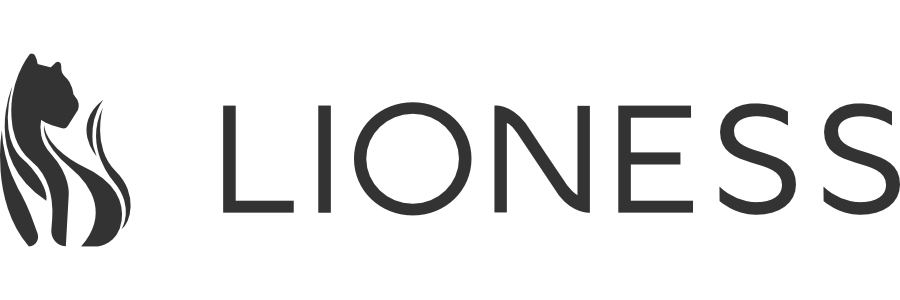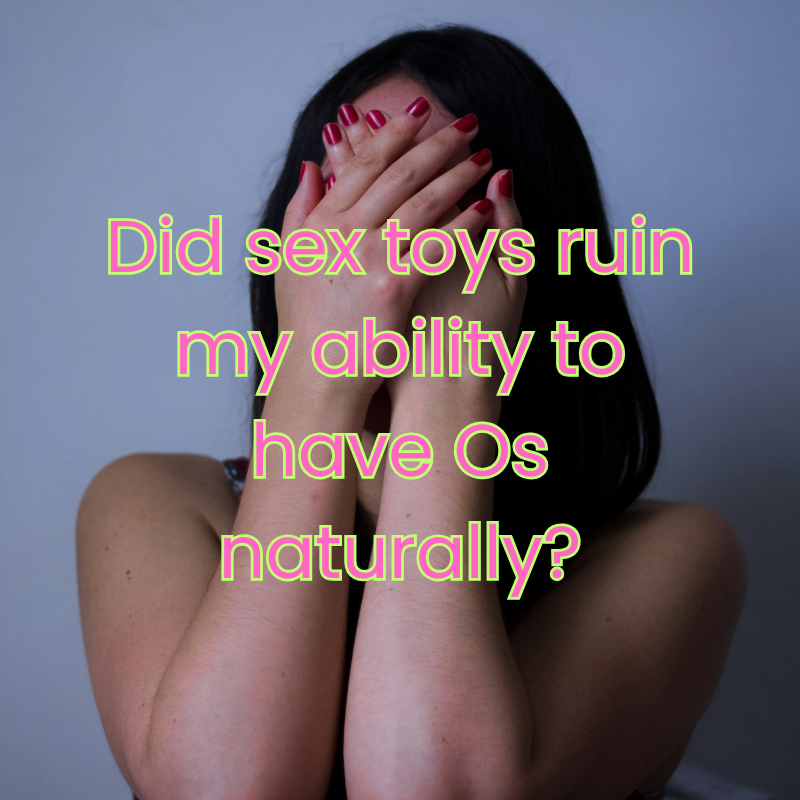
The very existence of female orgasms has been doubted for years. Even when they're said to exist, they've been called at points "a will-'o-the-wisp that defies scientific explanation". [2]
Given that, it's not that surprising that there's a lot of confusion.
What are orgasms exactly?
Masters and Johnson classically defined orgasms as a "climax."
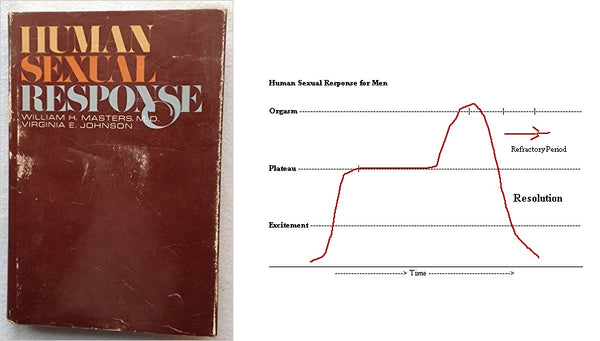
Physiologically speaking, it's associated with vaginal and pelvic floor contractions. It also is associated with the release of various hormones like oxytocin, ADH, and prolactin. And, perhaps most importantly, it's associated with pleasure. [3]
While some people can feel the pelvic floor contractions, many cannot. (As a side note, this definition is partly why we incorporated force sensors to detect pelvic contractions in the Lioness as part of orgasm feedback)
So what do orgasms feel like and where do you feel them?
As human beings, we have a fairly wide variety of sexual variation. Given that, it's unsurprising that there's a lot of different ways people describe an orgasm. That being said, we'll cover some of the most common ones here.
How do they feel?
One study of young women and men tackling this created a model to try to quantify these descriptions. The data from it is shown below. [4]
The top descriptions (in general) were pleasure and ecstasy. We include the raw data below but reformatted it into visual form for the women only to make it easier to read. Note that the scale itself doesn't mean much—the relative values to each other matter more.
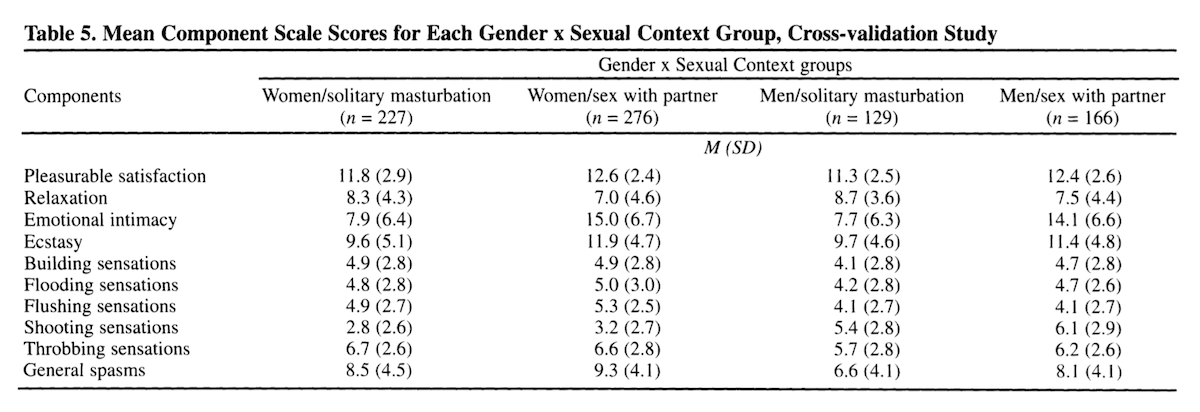
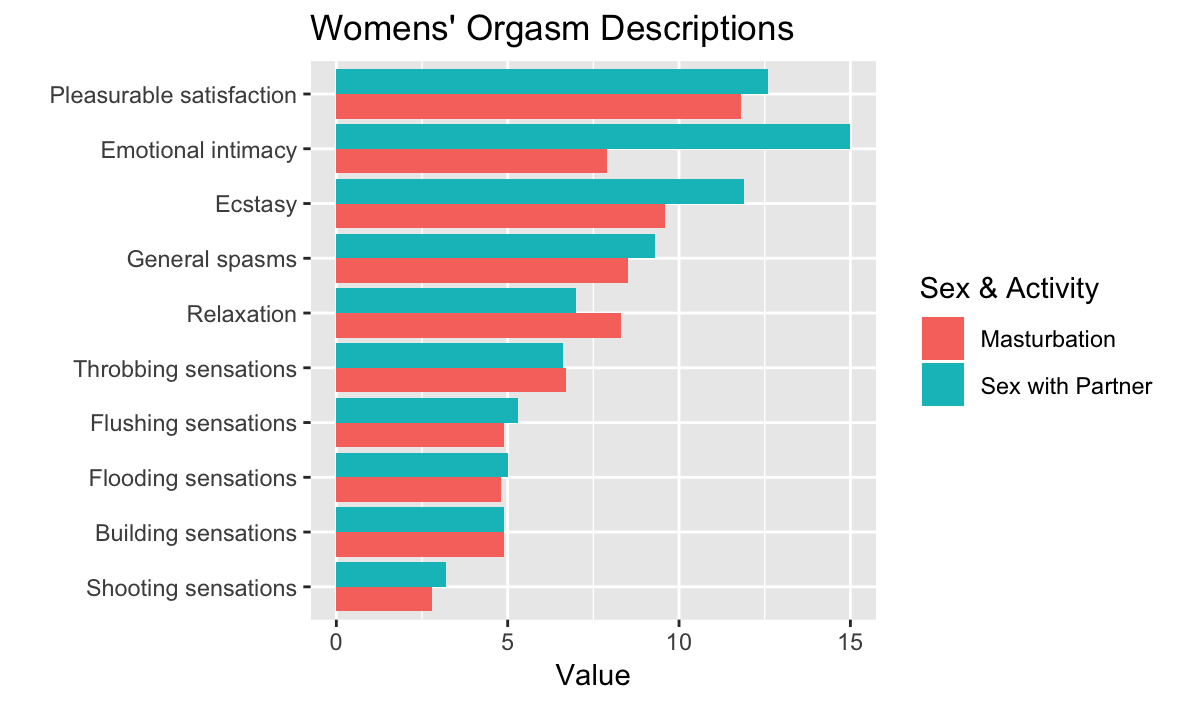
Of course, this isn't the only way to look at it. Another study asked female participants what characterized orgasm for them. The below data shows qualitative descriptions that at least half of the raters described as being part of orgasm for them. [1]
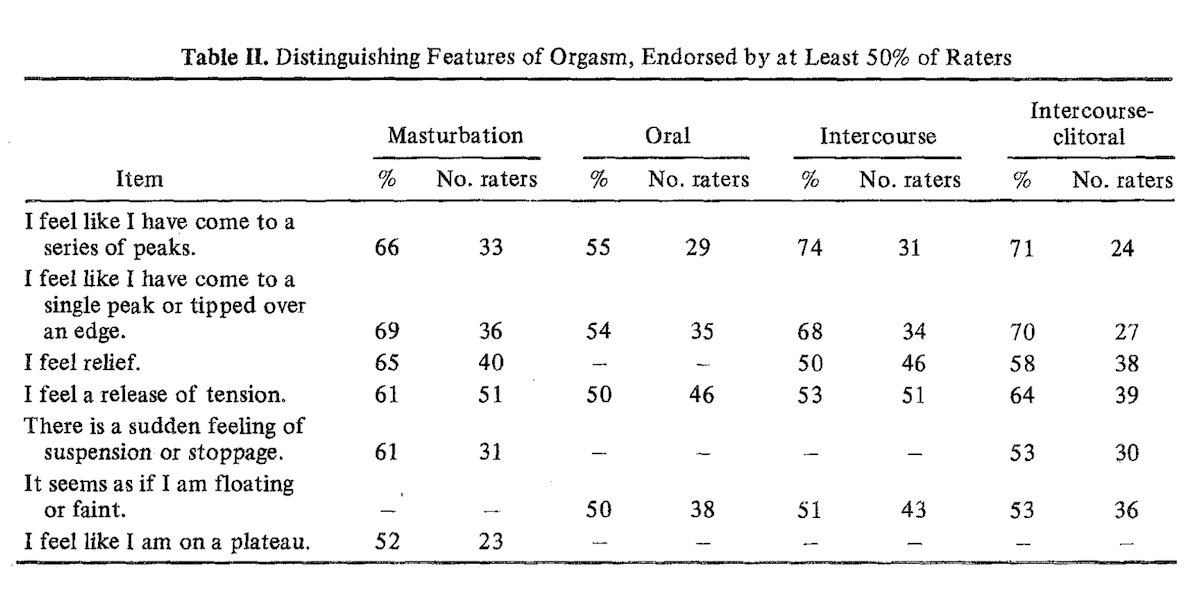
The broad three categories here can be seen as:
- Climax. Hitting either a series of peaks, or "tipping over an edge" are pretty common descriptions of orgasm, and perhaps the most well-represented in media.
- Release. Relief or release of tension is another way many describe orgasm. It's not quite as "explosive," which makes it harder to convey through HBO or porn, but is still quite common.
- Perception shift. The last category is either a feeling of floating, faintness, or time stopping in some sort of way. It's kind of like the feeling when falling asleep of "floating" or loss of sensation. While these are least common, we've heard this kind of description from our own users as well.
Where is it felt?
Another factor is where orgasms actually "occur." A somewhat snarky answer is "the brain"—which is technically true, though doesn't really answer the spirit of the question.
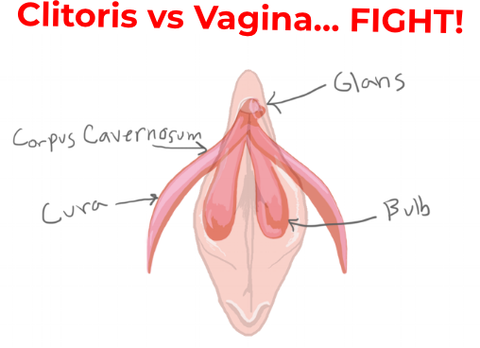
An implicit question here is whether or not there are differences between vaginal and clitoral orgasms, which we previously wrote about. Besides that, we (unscientifically) get a lot of varying subjective responses.
There have not been a huge number of studies on it that give concrete data. One that was done in 1984 is below. If there's any takeaway, it's mainly that it varies a lot depending on the person. [5]

The clitoris, the vagina, both—and potentially other locations (not shown) like breasts or toes are all represented in the span of people's sexual experiences.
Just for fun: what do they look like?
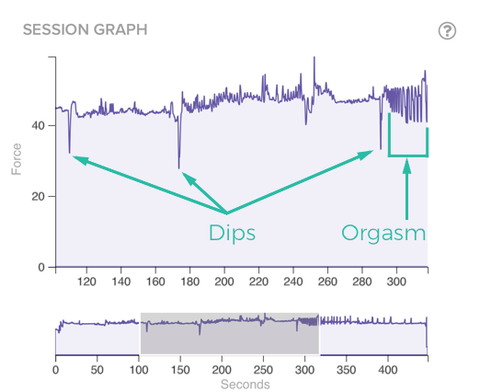
Orgasm and pelvic floor movements, data from Lioness app and vibrator.
As mentioned previously, the Lioness vibrator contains sensors that are able to allow folks to view their pelvic floor contractions... and, in a way, see their orgasms.
There are pretty widely varying experiences. It's quite unscientific, but we covered some of the variations we've seen (and given them informal labels) in a separate article.
A quick preview...
One kind of experience that we informally labeled "Ocean Wave":


“It feels like I’m on the ocean, with the waves moving over and over.” — Ocean
How many ways...
Like those old commercials about how many licks to get to the center of a tootsie roll, the answer is it can vary a lot based on your experience and how you go about it.
Hopefully, this article gives a bit of a sense as to the most common ways of describing what an orgasm feels like—but remember, just like those commercials, if your experience is different, that doesn't mean it's wrong.
In general, the more you experiment and get to know your body, not only do things get better but you answer more questions about your own unique body.
===
Want other ways to learn about what you like? The Lioness may be able to help!
 Lioness is the first and only vibrator that helps you improve your orgasms.
Lioness is the first and only vibrator that helps you improve your orgasms.The world’s most advanced vibrator. Precision sensors let you literally see your arousal and orgasm. Experiment, understand yourself, and have better orgasms — after all, as the saying goes, “never measured, never improved."
Click here to learn more.
===
References
[1] Clifford, R. E. (1978). Subjective sexual experience in college women. Archives of Sexual Behavior, 7(3), 183–197. http://doi.org/10.1007/BF01542378
[2] Levin, R. J. (1981). The female orgasm—A current appraisal. Journal of Psychosomatic Research, 25(2), 119–133. http://doi.org/10.1016/0022-3999(81)90099-4
[3] Levin, R. J. (2004). An orgasm is… who defines what an orgasm is? Sexual and Relationship Therapy, 19(1), 101–107. http://doi.org/10.1080/14681990410001641663
[4] Mah, K., & Binik, Y. M. (2002). Do all orgasms feel alike? Evaluating a two‐dimensional model of the orgasm experience across gender and sexual context. Journal of Sex Research, 39(2), 104–113. http://doi.org/10.1080/00224490209552129
[5] Sholty, M. J., Ephross, P. H., Plaut, S. M., Fischman, S. H., Charnas, J. F., & Cody, C. A. (1984). Female orgasmic experience: A subjective study. Archives of Sexual Behavior, 13(2), 155–164. http://doi.org/10.1007/BF01542149
